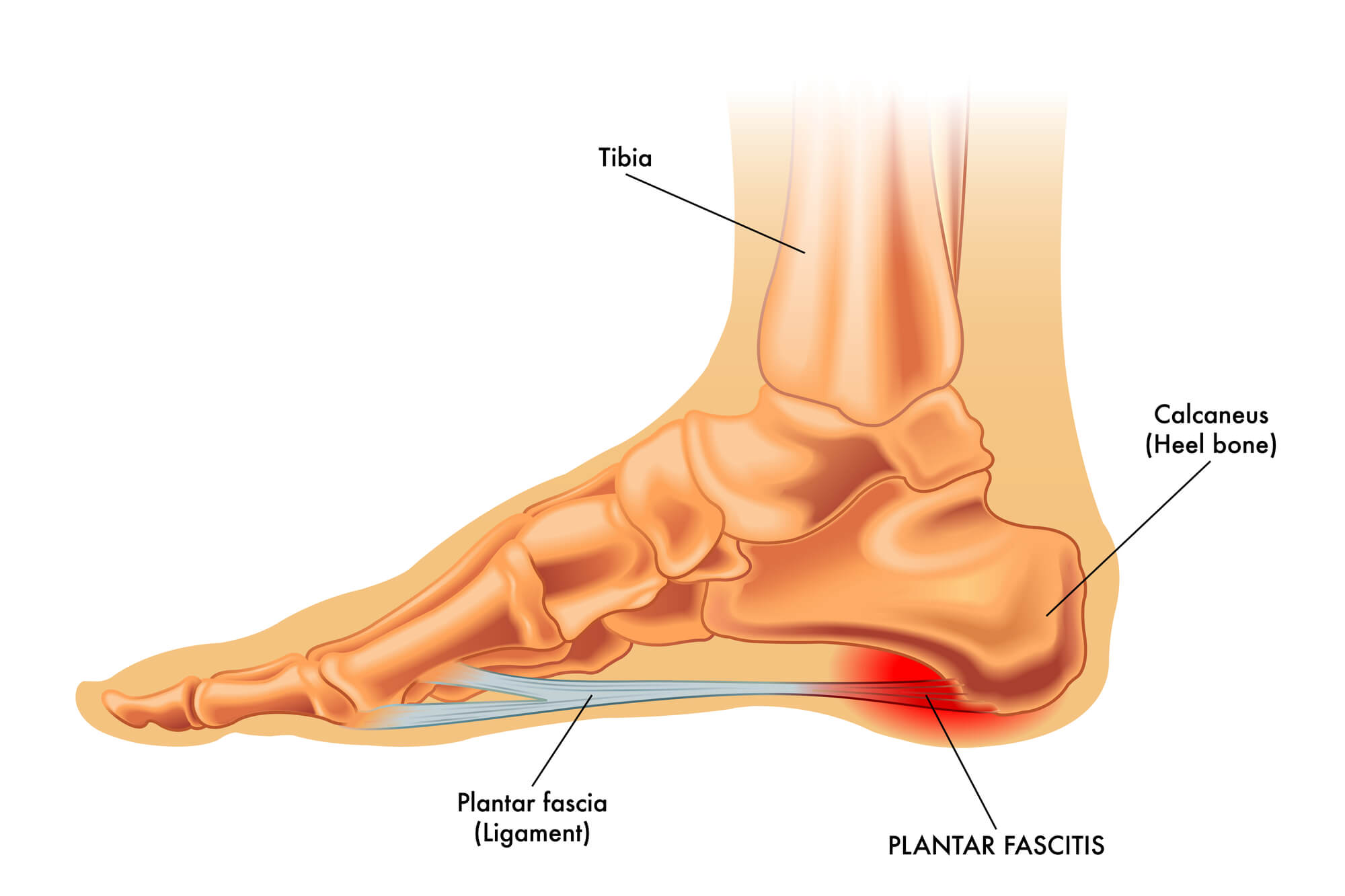Plantar Fascia Release Surgery: A Comprehensive Guide
Plantar fasciitis is a common foot condition that causes pain and inflammation in the plantar fascia, a band of tissue that runs along the bottom of the foot from the heel to the toes. The condition is often seen in runners and other athletes, but it can also affect sedentary individuals. While non-surgical treatments such as stretching exercises, physical therapy, and custom orthotic inserts can effectively relieve the pain associated with plantar fasciitis, some cases may require surgical intervention.
This article will discuss the various surgical options available for treating plantar fasciitis, including the preparation and recovery process and the risks and complications associated with these procedures. We will also explore the long-term outcomes of plantar fascia release surgery and factors that may affect its success.
What is Plantar Fasciitis?
Plantar fasciitis is a condition that affects the plantar fascia, a thick band of tissue that runs along the bottom of the foot and connects the heel bone to the toes. The plantar fascia helps to support the arch of the foot and plays a role in shock absorption during movement.
Symptoms of Plantar Fasciitis
The most common symptom of plantar fasciitis is a pain in the heel and bottom of the foot, especially when walking or standing for long periods. The pain is often worse in the morning and may improve as the day progresses, but it can also return after prolonged periods of inactivity. Other symptoms of plantar fasciitis may include swelling, redness, and tenderness in the heel and arch area.

Causes of Plantar Fasciitis
Several factors can contribute to the development of plantar fasciitis, including:
- Overuse or strain on the foot: Activities that involve a lot of standing, walking, or running, such as dancing or long-distance running, can put extra strain on the plantar fascia and increase the risk of developing plantar fasciitis.
- Poor foot posture: Feet that roll inward excessively (overpronation) or have high arches can put extra stress on the plantar fascia and lead to plantar fasciitis.
- Tight calf muscles: Tight calf muscles can cause the foot to point downward, putting extra strain on the plantar fascia.
- Obesity: Carrying extra weight can place additional pressure on the plantar fascia and increase the risk of developing plantar fasciitis.
When is Surgery Necessary?
While most cases of plantar fasciitis can be treated non-surgically, there are some instances where surgical intervention may be necessary.
Failed Non-Surgical Treatment
In some cases, individuals with plantar fasciitis may not experience relief from non-surgical treatments such as stretching exercises, physical therapy, and custom orthotic inserts. Surgery may be recommended as a last resort to relieve pain and improve function in these cases.
Severe and Persistent Pain
In some cases, plantar fasciitis may cause severe and persistent pain that interferes with daily activities and quality of life. In these cases, surgery may be necessary to relieve the pain and improve function.

The Surgery Process
Preparation for Surgery
Before undergoing plantar fascia release surgery, patients will typically meet with a podiatrist or foot and ankle surgeon to discuss their medical history and treatment options. Patients must disclose any allergies or medications they are taking, as well as any previous surgeries or medical conditions.
The surgeon may also order imaging tests such as X-rays or MRI scans to assess the severity of the plantar fasciitis and determine the best surgical approach.
Patients will also be asked to stop taking certain medications, such as blood thinners, and to avoid smoking or drinking alcohol for some time before the surgery.
The Surgery Procedure
There are several surgical options available for treating plantar fasciitis, including:
- Open plantar fasciotomy: This surgical procedure involves making a small incision in the heel and releasing a portion of the plantar fascia to alleviate tension and reduce pain. This procedure may be performed under local or general anesthesia.
- Endoscopic plantar fascia release: This minimally invasive surgical technique involves making a small incision in the heel and using an endoscope (a thin, tube-like instrument with a camera) to visualize the plantar fascia and release it. This procedure is typically performed under local anesthesia.
- Partial plantar fascia release: This surgical technique involves releasing a portion of the plantar fascia to relieve tension and reduce pain. This procedure may be performed using either an open or endoscopic approach.
- Total plantar fascia release: This surgery involves releasing the entire plantar fascia in order to alleviate pain. This is a more invasive procedure and is typically reserved for severe cases of plantar fasciitis that have not responded to other treatment options.

Recovery and Rehabilitation
After plantar fascia release surgery, patients wear a protective boot or cast and use crutches or a cane to help them walk. They will also be advised to elevate their foot to reduce swelling.
Most patients can return to non-weight-bearing activities within a few weeks after surgery, but it may take 6 to 12 months to fully recover and return to normal activities. Physical therapy and stretching exercises may be recommended to help strengthen the foot and improve mobility.
Risks and Complications
As with any surgical procedure, plantar fascia release surgery carries certain risks and complications. These may include:
- Infection: The risk of infection can be minimized by properly caring for the incision site and taking antibiotics as prescribed.
- Nerve damage: In rare cases, the procedure may cause damage to the nerves in the foot, leading to numbness or tingling sensations.
- Scarring: Some patients may develop scar tissue at the incision site. In most cases, this is minimal and will fade over time.
- Recalcitrant plantar fasciitis: In some cases, plantar fasciitis may persist or recur even after surgical intervention.

Success Rates and Long-Term Outcomes
The success rates for plantar fascia release surgery vary, with some studies reporting success rates as high as 90%. However, other studies have found lower success rates, with some patients experiencing persistent pain or recurrent plantar fasciitis even after surgery.
Factors Affecting Success
Several factors can affect the success of plantar fascia release surgery, including:
- The severity of the plantar fasciitis: More severe cases may be more difficult to treat and may have lower success rates.
- The type of surgical procedure performed: Some surgical techniques, such as endoscopic plantar fascia release, may have higher success rates than others.
- The patient's overall health: Patients who are in good overall health and follow the post-operative instructions carefully are more likely to experience a successful outcome.
- The patient's age: Older patients may have a slower recovery time and be at increased risk of complications.
Maintaining Foot Health after Surgery
To maintain foot health and reduce the risk of recurrent plantar fasciitis, patients need to take the following steps after surgery:
- Follow the post-operative instructions provided by the surgeon, including any recommendations for physical therapy or stretching exercises.
- Wear supportive footwear and custom orthotic inserts as recommended by the surgeon.
- Avoid activities that put excessive strain on the foot, such as running or high-impact sports, until cleared by the surgeon.
- Maintain a healthy weight to reduce the risk of re-injury.
Conclusion
Plantar fascia release surgery is a surgical option for treating plantar fasciitis that has not responded to non-surgical treatments. While the success rates of these procedures vary, most patients experience significant pain relief and improved function after surgery. However, as with any surgical procedure, some risks and complications should be considered before proceeding. It is important for patients to discuss all treatment options with a foot and ankle surgeon and carefully follow post-operative instructions to ensure the best possible outcome.
FAQ
How long does it take to recover from plantar fascia release surgery?
Most patients can return to non-weight-bearing activities within a few weeks after surgery, but it may take 6 to 12 months to recover and return to normal activities fully. Physical therapy and stretching exercises may be recommended to help strengthen the foot and improve mobility.
What to expect after plantar fascia release surgery?
After plantar fascia release surgery, patients typically wear a protective boot or cast and use crutches or a cane to help them walk. They will also be advised to elevate their foot to reduce swelling. Pain medication may be prescribed to help manage any discomfort. Patients need to follow the post-operative instructions provided by the surgeon, including any recommendations for physical therapy or stretching exercises, to ensure a successful recovery.
Can plantar fasciitis come back after release surgery?
In some cases, plantar fasciitis may persist or recur even after surgical intervention. To reduce the risk of recurrent plantar fasciitis, patients need to take the following steps after surgery: wear supportive footwear and custom orthotic inserts as recommended by the surgeon, avoid activities that put excessive strain on the foot, such as running or high-impact sports, until cleared by the surgeon, and maintain a healthy weight. However, it is still possible for plantar fasciitis to recur even with proper care.

